Batman
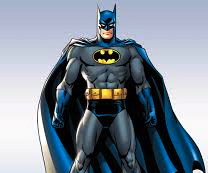
Batman Beyond: Return of The Joker – Part 1
When The Joker returns to Gotham City to destroy former Batman Bruce Wayne, a new Dark Knight rescues his mentor and discovers the truth about a seemingly immortal villain. After a 40-year absence, The Joker (Mark Hamill) invades Bruce Wayne’s (Kevin Conroy) estate, revealing his knowledge of Wayne’s past secret identity. The Joker nearly kills his nemesis, but Batman, alias Terry McGinnis (Will Friedle), Wayne’s protégé, saves Wayne’s life–for now. Pressured by Terry to divulge the truth, Commissioner Gordon (Angie Harmon) retells the events of the night she witnessed the total annihilation of the psychopathic Joker. So how can the Clown Prince of Crime be alive? Will this inexperienced Batman meet The Joker’s challenge? Bruce Wayne’s life depends on it in the action-packed animated adventure Batman Beyond: Return Of The Joker.
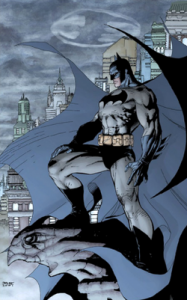 Promotional art for Batman #608 (October 2002, second printing)
Promotional art for Batman #608 (October 2002, second printing)
Batman is a fictional character, a comic book superhero appearing in comic books published by DC Comics. Batman was created by artist Bob Kane and writer Bill Finger, and first appeared in Detective Comics #27 (May 1939). Originally referred to as “the Bat-Man” and still referred to at times as “the Batman,” the character is additionally known as “the Caped Crusader,” “the Dark Knight,” and “the World’s Greatest Detective,” among other titles.
Batman is the secret identity of Bruce Wayne, an American billionaire playboy, industrialist, and philanthropist. Having witnessed the murder of his parents as a child, he swore revenge on criminals, an oath tempered with the greater ideal of justice. Wayne trains himself both physically and intellectually and dons a bat-themed costume in order to fight crime. Batman operates in the fictional Gotham City, assisted by various supporting characters including his crime-fighting partner, Robin, his butlerAlfred Pennyworth, the police commissioner Jim Gordon, and occasionally the heroine Batgirl. He fights an assortment of villains, often referred to as the “rogues gallery,” which includes the Joker, the Penguin, the Riddler, Two-Face, Ra’s al Ghul, Scarecrow, Poison Ivy, and Catwoman, among others. Unlike most superheroes, he does not possess any superpowers; he makes use of intellect, detective skills, science and technology, wealth, physical prowess, martial arts skills, an indomitable will, fear, and intimidation in his continuous war on crime.
Batman became a very popular character soon after his introduction and gained his own comic book title, Batman, in 1940. As the decades wore on, differing interpretations of the character emerged. The late 1960’s Batman television series used a camp aesthetic which continued to be associated with the character for years after the show ended. Various creators worked to return the character to his dark roots, with varying results. The comic books of this dark stage culminated in the acclaimed 1986 miniseries The Dark Knight Returns, by Frank Miller, as well as Batman: The Killing Joke by Alan Moore and Arkham Asylum: A Serious House on Serious Earth, among others. The overall success of Warner Bros.‘ live-action Batman feature films have also helped maintain public interest in the character.
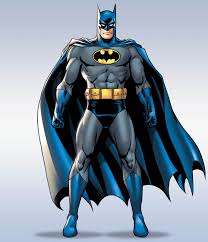 A cultural icon, Batman has been licensed and adapted into a variety of media, from radio to television and film, and appears on a variety of merchandise sold all over the world such as toys and video games. The character has also intrigued psychiatrists with many trying to understand the character’s psyche and his true ego in society. In May 2011, Batman placed second on IGN’s Top 100 Comic Book Heroes of All Time, after Superman. Empire magazine also listed him second in their 50 Greatest Comic Book Characters of All Time. The character has been portrayed by Adam West,Michael Keaton, Val Kilmer, George Clooney, Christian Bale and soon by Ben Affleck in films.
A cultural icon, Batman has been licensed and adapted into a variety of media, from radio to television and film, and appears on a variety of merchandise sold all over the world such as toys and video games. The character has also intrigued psychiatrists with many trying to understand the character’s psyche and his true ego in society. In May 2011, Batman placed second on IGN’s Top 100 Comic Book Heroes of All Time, after Superman. Empire magazine also listed him second in their 50 Greatest Comic Book Characters of All Time. The character has been portrayed by Adam West,Michael Keaton, Val Kilmer, George Clooney, Christian Bale and soon by Ben Affleck in films.
Publication history
List of Batman comics – Creation
In early 1939, the success of Superman in Action Comics prompted editors at the comic book division of National Publications (the future DC Comics) to request more superheroes for its titles. In response, Bob Kane created “the Bat-Man.” Collaborator Bill Fingerrecalled “Kane had an idea for a character called ‘Batman’, and he’d like me to see the drawings. I went over to Kane’s, and he had drawn a character who looked very much like Superman with kind of … reddish tights, I believe, with boots … no gloves, no gauntlets … with a small domino mask, swinging on a rope. He had two stiff wings that were sticking out, looking like bat wings. And under it was a big sign … BATMAN.”
Finger offered such suggestions as giving the character a cowl instead of a simple domino mask, a cape instead of wings, and gloves, and removing the red sections from the original costume. Finger said he devised the name Bruce Wayne for the character’s secret identity: “Bruce Wayne’s first name came from Robert Bruce, the Scottish patriot. Bruce, being a playboy, was a man of gentry. I searched for a name that would suggest colonialism. I tried Adams, Hancock … then I thought of Mad Anthony Wayne.” He later said his suggestions were influenced by Lee Falk‘s popular The Phantom, a syndicated newspaper comic-strip character with which Kane was familiar as well.
Kane and Finger drew upon contemporary 1930s popular culture for inspiration regarding much of the Bat-Man’s look, personality, methods and weaponry. Details find predecessors in pulp fiction, comic strips, newspaper headlines, and autobiographical details referring to Kane himself. As an aristocratic hero with a double identity, the Bat-Man had predecessors in the Scarlet Pimpernel (created by Baroness Emmuska Orczy, 1903) and Zorro (created by Johnston McCulley, 1919). Like them, he performed his heroic deeds in secret, averted suspicion by playing the fool in public, and marked his work with a signature symbol. Kane specifically noted the influence of the films The Mark of Zorro (1920) and The Bat Whispers (1930) in the creation of the character’s iconography. Finger, drawing inspiration from pulp heroes like Doc Savage, The Shadow, and Sherlock Holmes, made the character a master sleuth.
In his 1989 autobiography, Kane detailed Finger’s contributions to Batman’s creation:
“One day I called Bill and said, ‘I have a new character called the Bat-Man and I’ve made some crude, elementary sketches I’d like you to look at’. He came over and I showed him the drawings. At the time, I only had a small domino mask, like the one Robin later wore, on Batman’s face. Bill said, ‘Why not make him look more like a bat and put a hood on him, and take the eyeballs out and just put slits for eyes to make him look more mysterious?’ At this point, the Bat-Man wore a red union suit; the wings, trunks, and mask were black. I thought that red and black would be a good combination. Bill said that the costume was too bright: ‘Color it dark gray to make it look more ominous’. The cape looked like two stiff bat wings attached to his arms. As Bill and I talked, we realized that these wings would get cumbersome when Bat-Man was in action, and changed them into a cape, scalloped to look like bat wings when he was fighting or swinging down on a rope. Also, he didn’t have any gloves on, and we added them so that he wouldn’t leave fingerprints.”
Subsequent creation credit
Kane signed away ownership in the character in exchange for, among other compensation, a mandatory byline on all Batman comics. This byline did not, originally say “Batman created by Bob Kane”; his name was simply written on the title page of each story. The name disappeared from the comic book in the mid-1960’s, replaced by credits for each story’s actual writer and artists. In the late 1970’s, when Jerry Siegel and Joe Shuster began receiving a “created by” credit on the Superman titles, along with William Moulton Marston being given the byline for creating Wonder Woman, Batman stories began saying “Created by Bob Kane” in addition to the other credits.
 Finger did not receive the same recognition. While he had received credit for other DC work since the 1940’s, he began, in the 1960’s, to receive limited acknowledgment for his Batman writing; in the letters page of Batman #169 (February 1965) for example, editor Julius Schwartz names him as the creator of the Riddler, one of Batman’s recurring villains. However, Finger’s contract left him only with his writing page rate and no byline. Kane wrote, “Bill was disheartened by the lack of major accomplishments in his career. He felt that he had not used his creative potential to its fullest and that success had passed him by.” At the time of Finger’s death in 1974, DC had not officially credited Finger as Batman co-creator.
Finger did not receive the same recognition. While he had received credit for other DC work since the 1940’s, he began, in the 1960’s, to receive limited acknowledgment for his Batman writing; in the letters page of Batman #169 (February 1965) for example, editor Julius Schwartz names him as the creator of the Riddler, one of Batman’s recurring villains. However, Finger’s contract left him only with his writing page rate and no byline. Kane wrote, “Bill was disheartened by the lack of major accomplishments in his career. He felt that he had not used his creative potential to its fullest and that success had passed him by.” At the time of Finger’s death in 1974, DC had not officially credited Finger as Batman co-creator.
Jerry Robinson, who also worked with Finger and Kane on the strip at this time, has criticized Kane for failing to share the credit. He recalled Finger resenting his position, stating in a 2005 interview with The Comics Journal:
“Bob made him more insecure, because while he slaved working on Batman, he wasn’t sharing in any of the glory or the money that Bob began to make, which is why… [he was] going to leave [Kane’s employ]. … [Kane] should have credited Bill as co-creator, because I know; I was there. … That was one thing I would never forgive Bob for, was not to take care of Bill or recognize his vital role in the creation of Batman. As with Siegel and Shuster, it should have been the same, the same co-creator credit in the strip, writer and artist.”
Although Kane initially rebutted Finger’s claims at having created the character, writing in a 1965 open letter to fans that “it seemed to me that Bill Finger has given out the impression that he and not myself created the ”Batman” as well as Robin and all the other leading villains and characters. This statement is fraudulent and entirely untrue.” Kane himself also commented on Finger’s lack of credit. “The trouble with being a ‘ghost’ writer or artist is that you must remain rather anonymously without ‘credit’. However, if one wants the ‘credit’, then one has to cease being a ‘ghost’ or follower and become a leader or innovator.”
In 1989, Kane revisited Finger’s situation, recalling in an interview,
“In those days it was like, one artist and he had his name over it [the comic strip] — the policy of DC in the comic books was, if you can’t write it, obtain other writers, but their names would never appear on the comic book in the finished version. So Bill never asked me for it [the byline] and I never volunteered — I guess my ego at that time. And I felt badly, really, when he [Finger] died.”
Early years
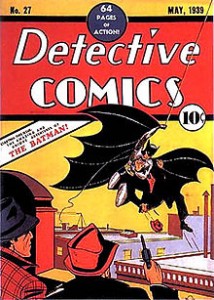 Batman made his debut in Detective Comics#27 (May 1939) – cover art by Bob Kane
Batman made his debut in Detective Comics#27 (May 1939) – cover art by Bob Kane
The first Batman story, “The Case of the Chemical Syndicate,” was published in Detective Comics #27 (May 1939). Finger said, “Batman was originally written in the style of the pulps,” and this influence was evident with Batman showing little remorse over killing or maiming criminals. Batman proved a hit character, and he received his own solo title in 1940, while continuing to star in Detective Comics. By that time, National was the top-selling and most influential publisher in the industry; Batman and the company’s other major hero, Superman, were the cornerstones of the company’s success. The two characters were featured side-by-side as the stars of World’s Finest Comics, which was originally titledWorld’s Best Comics when it debuted in fall 1940. Creators including Jerry Robinson and Dick Sprang also worked on the strips during this period.
Over the course of the first few Batman strips elements were added to the character and the artistic depiction of Batman evolved. Kane noted that within six issues he drew the character’s jawline more pronounced, and lengthened the ears on the costume. “About a year later he was almost the full figure, my mature Batman,” Kane said. Batman’s characteristic utility belt was introduced in Detective Comics #29 (July 1939), followed by the boomerang-like batarang and the first bat-themed vehicle, the Batplane, in #31 (Sept. 1939). The character’s origin was revealed in #33 (Nov. 1939), unfolding in a two-page story that establishes the brooding persona of Batman, a character driven by the death of his parents. Written by Finger, it depicts a young Bruce Wayne witnessing his parents’ murder at the hands of a mugger. Days later, at their grave, the child vows that “by the spirits of my parents [I will] avenge their deaths by spending the rest of my life warring on all criminals.”
The early, pulp-inflected portrayal of Batman started to soften in Detective Comics #38 (April 1940) with the introduction of Robin, Batman’s kid sidekick. Robin was introduced, based on Finger’s suggestion Batman needed a “Watson” with whom Batman could talk. Sales nearly doubled, despite Kane’s preference for a solo Batman, and it sparked a proliferation of “kid sidekicks.” The first issue of the solo spin-off series Batman was notable not only for introducing two of his most persistent enemies, the Joker andCatwoman, but for a story in which Batman shoots some monstrous giants to death. That story prompted editor Whitney Ellsworth to decree that the character could no longer kill or use a gun.
By 1942, the writers and artists behind the Batman comics had established most of the basic elements of the Batman mythos. In the years following World War II, DC Comics “adopted a postwar editorial direction that increasingly de-emphasized social commentary in favor of lighthearted juvenile fantasy.” The impact of this editorial approach was evident in Batman comics of the postwar period; removed from the “bleak and menacing world” of the strips of the early 1940’s, Batman was instead portrayed as a respectable citizen and paternal figure that inhabited a “bright and colorful” environment.
Batman was one of the few superhero characters to be continuously published as interest in the genre waned during the 1950s. In the story “The Mightiest Team in the World” in Superman #76 (June 1952), Batman teams up with Superman for the first time and the pair discovers each other’s secret identity. Following the success of this story, World’s Finest Comics was revamped so it featured stories starring both heroes together, instead of the separate Batman and Superman features that had been running before. The team-up of the characters was “a financial success in an era when those were few and far between”; this series of stories ran until the book’s cancellation in 1986.
Batman comics were among those criticized when the comic book industry came under scrutiny with the publication of psychologist Fredric Wertham‘s book Seduction of the Innocent in 1954. Wertham’s thesis was that children imitated crimes committed in comic books, and that these works corrupt the morals of the youth. Wertham criticized Batman comics for their supposed homosexual overtones and argued that Batman and Robin were portrayed as lovers. Wertham’s criticisms raised a public outcry during the 1950’s, eventually leading to the establishment of the Comics Code Authority. The tendency towards a “sunnier Batman” in the postwar years intensified after the introduction of the Comics Code. Scholars have suggested that the characters of Batwoman (in 1956) and the pre-Barbara Gordon Bat-Girl (in 1961) were introduced in part to refute the allegation that Batman and Robin were gay, and the stories took on a campier, lighter feel.
In the late 1950s, Batman stories gradually became more science fiction-oriented, an attempt at mimicking the success of other DC characters that had dabbled in the genre. New characters such as Batwoman, Ace the Bat-Hound, and Bat-Mite were introduced. Batman’s adventures often involved odd transformations or bizarre space aliens. In 1960, Batman debuted as a member of the Justice League of America in The Brave and the Bold #28 (Feb. 1960), and went on to appear in several Justice League comic series starting later that same year.
“New Look” Batman and camp
By 1964, sales on Batman titles had fallen drastically. Bob Kane noted that, as a result, DC was “planning to kill Batman off altogether.” In response to this, editor Julius Schwartz was assigned to the Batman titles. He presided over drastic changes, beginning with 1964’s Detective Comics #327 (May 1964), which was cover-billed as the “New Look”. Schwartz introduced changes designed to make Batman more contemporary, and to return him to more detective-oriented stories. He brought in artist Carmine Infantino to help overhaul the character. The Batmobile was redesigned, and Batman’s costume was modified to incorporate a yellow ellipse behind the bat-insignia. The space aliens and characters of the 1950s such as Batwoman, Ace, and Bat-Mite were retired. Batman’s butler Alfred was killed off (though his death was quickly reversed) while a new female relative for the Wayne family, Aunt Harriet, came to live with Bruce Wayne and Dick Grayson.
The debut of the Batman television series in 1966 had a profound influence on the character. The success of the series increased sales throughout the comic book industry, and Batman reached a circulation of close to 900,000 copies. Elements such as the character of Batgirl and the show’s campy nature were introduced into the comics; the series also initiated the return of Alfred. Although both the comics and TV show were successful for a time, the camp approach eventually wore thin and the show was canceled in 1968. In the aftermath, the Batman comics themselves lost popularity once again. As Julius Schwartz noted, “When the television show was a success, I was asked to be campy, and of course when the show faded, so did the comic books.”
Starting in 1969, writer Dennis O’Neil and artist Neal Adams made a deliberate effort to distance Batman from the campy portrayal of the 1960’s TV series and to return the character to his roots as a “grim avenger of the night.” O’Neil said his idea was “simply to take it back to where it started. I went to the DC library and read some of the early stories. I tried to get a sense of what Kane and Finger were after.”
O’Neil and Adams first collaborated on the story “The Secret of the Waiting Graves” (Detective Comics #395, January 1970). Few stories were true collaborations between O’Neil, Adams, Schwartz, and inker Dick Giordano, and in actuality these men were mixed and matched with various other creators during the 1970s; nevertheless the influence of their work was “tremendous.” Giordano said: “We went back to a grimmer, darker Batman, and I think that’s why these stories did so well…” While the work of O’Neil and Adams was popular with fans, the acclaim did little to help declining sales; the same held true with a similarly acclaimed run by writer Steve Englehart and penciler Marshall Rogers in Detective Comics #471–476 (August 1977 – April 1978), which went on to influence the 1989 movie Batman and be adapted for Batman: The Animated Series, which debuted in 1992. Regardless, circulation continued to drop through the 1970s and 1980s, hitting an all-time low in 1985.
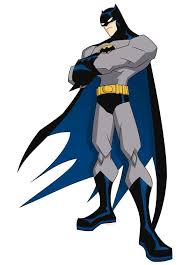 The Dark Knight Returns – Alternative versions of Batman
The Dark Knight Returns – Alternative versions of Batman
Frank Miller‘s limited series The Dark Knight Returns (February–June 1986), which tells the story of a 55-year old Batman coming out of retirement in a possible future, reinvigorated the character. The Dark Knight Returns was a financial success and has since become one of the medium’s most noted touchstones. The series also sparked a major resurgence in the character’s popularity.
That year Dennis O’Neil took over as editor of the Batman titles and set the template for the portrayal of Batman following DC’s status quo-altering miniseries Crisis on Infinite Earths. O’Neil operated under the assumption that he was hired to revamp the character and as a result tried to instill a different tone in the books than had gone before. One outcome of this new approach was the “Year One” storyline in Batman #404–407 (February–May 1987), in which Frank Miller and artist David Mazzucchelli redefined the character’s origins. Writer Alan Moore and artist Brian Bolland continued this dark trend with 1988’s 48-page one-shot Batman: The Killing Joke, in which the Joker, attempting to drive Commissioner Gordon insane, cripples Gordon’s daughter Barbara, and then kidnaps and tortures the commissioner, physically and psychologically.
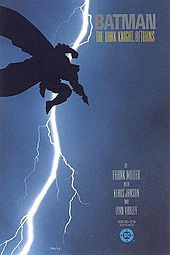 The first issue of The Dark Knight Returns, which redefined Batman in the 1980’s – cover art by Frank Miller
The first issue of The Dark Knight Returns, which redefined Batman in the 1980’s – cover art by Frank Miller
The Batman comics garnered major attention in 1988 when DC Comics created a 900 number for readers to call to vote on whether Jason Todd, the second Robin, lived or died. Voters decided in favor of Jason’s death by a narrow margin of 28 votes (see Batman: A Death in the Family). The following year saw the release of Tim Burton‘s Batman feature film, which firmly brought the character back to the public’s attention, grossing millions of dollars at the box office, and millions more in merchandising. However, the three sequels, Tim Burton’s Batman Returns and director Joel Schumacher‘s Batman Forever and Batman & Robin, did not perform as well at the box office. The fourth film in the series, the Schumacher-directed Batman & Robin, meanwhile, was a critical and commercial failure. The Batman movie franchise was rebooted with director and co-writer Christopher Nolan‘s Batman Begins in 2005, The Dark Knight in 2008 and The Dark Knight Rises in 2012. In 1989, the first issue of Legends of the Dark Knight, the first new solo Batman title in nearly 50 years, sold close to a million copies.
The 1993 “Knightfall” story arc introduced a new villain, Bane, who critically injures Batman. Jean-Paul Valley, known as Azrael, is called upon to wear the Batsuit during Bruce Wayne’s convalescence. Writers Doug Moench, Chuck Dixon, and Alan Grant worked on the Batman titles during “Knightfall,” and would also contribute to other Batman crossovers throughout the 1990s. 1998’s “Cataclysm” storyline served as the precursor to 1999’s “No Man’s Land“, a year-long storyline that ran through all the Batman-related titles dealing with the effects of an earthquake-ravaged Gotham City. At the conclusion of “No Man’s Land”, O’Neil stepped down as editor and was replaced by Bob Schreck.
Another writer who rose to prominence on the Batman comic series, was Jeph Loeb. Along with longtime collaborator Tim Sale, they wrote two miniseries (“The Long Halloween” and “Dark Victory“) that pit an early in his career version of Batman against his entire rogue’s gallery (most notably Two-Face, whose origin was re-envisioned by Loeb) while dealing with various mysteries involving serial killers Holiday and the Hangman. In 2003, Loeb teamed with artist Jim Lee to work on another mystery arc: “Batman: Hush” for the main Batman book. The twelve issue storyline saw Batman and Catwoman running the gauntlet against Batman’s entire rogue’s gallery, including an apparently resurrected Jason Todd, while seeking to find the identity of the mysterious supervillain Hush. While the character of Hush failed to catch on with readers, the arc was a sales success for DC. As the storyline was Jim Lee’s first regular comic book work in nearly a decade, the series became #1 on the Diamond Comic Distributors sales chart for the first time sinceBatman #500 (October 1993) and Jason Todd’s appearance laid the groundwork for writer Judd Winick‘s subsequent run as writer onBatman, with another multi-issue epic, “Under the Hood,” which ran from Batman #637–650.
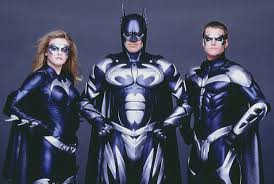 In 2005, DC launched All-Star Batman and Robin, a stand-alone comic series set outside the existing DC Universe. Written by Frank Miller and drawn by Jim Lee, the series was a commercial success for DC Comics though widely panned by critics for its writing.
In 2005, DC launched All-Star Batman and Robin, a stand-alone comic series set outside the existing DC Universe. Written by Frank Miller and drawn by Jim Lee, the series was a commercial success for DC Comics though widely panned by critics for its writing.
Starting in 2006, the regular writers on Batman and Detective Comics were Grant Morrison and Paul Dini, with Grant Morrison reincorporating controversial elements of Batman lore (most notably, the science fiction themed storylines of the 195’s Batman comics, which Morrison revised as hallucinations Batman suffered under the influence of various mind-bending gases and extensive sensory deprivation training) into the character. Morrison’s run climaxed with “Batman R.I.P.”, which brought Batman up against the villainous “Black Glove” organization, which sought to drive Batman into madness. “Batman R.I.P.” segued into Final Crisis (also written by Morrison), which saw the apparent death of Batman at the hands of Darkseid. In the 2009 miniseries Batman: Battle for the Cowl, Wayne’s former protégé Dick Grayson becomes the new Batman, and Wayne’s son Damian becomes the new Robin. In June 2009, Judd Winick returned to writing Batman, while Grant Morrison was given his own series, titled Batman and Robin.
In 2010, the storyline Batman: The Return of Bruce Wayne saw Bruce travel through history, eventually returning to the present day. Although he reclaimed the mantle of Batman, he also allowed Grayson to continue being Batman as well. Bruce decided to take his war on crime globally, which is the central focus of Batman Incorporated. DC Comics would later announce that Grayson would be the main character in Batman, Detective Comics and Batman and Robin, while Wayne would be the main character in Batman Incorporated. Also, Bruce appeared in another ongoing series, Batman: The Dark Knight.
In September 2011, DC Comics’ entire line of superhero books, including its Batman franchise, was canceled and relaunched with new #1 issues as part of The New 52 reboot. Bruce Wayne is the only character to be identified as Batman and will be featured in Batman,Detective Comics, Batman and Robin, and Batman: The Dark Knight. Dick Grayson returns to the mantle of Nightwing and appears in his own ongoing series. While many characters have their histories significantly altered to attract newer, younger readers, Batman’s history remains mostly intact. Batman Incorporated was relaunched in 2012 to complete the “Leviathan” storyline.
Since the beginning of The New 52, Scott Snyder has been the writer of the flagship Batman title. His first major story arc was “Night of the Owls,” where Batman confronts the Court of Owls, a secret society that has controlled Gotham for centuries. The second story arc was “Death of the Family“, where the Joker returns from to Gotham and simultaneously attacks each member of the Batman family. The newest story arc is “Batman: Zero Year,” which redefines Batman’s origin in The New 52. It follows Batman #0, published in June 2012, which explored the character’s early years.
Fictional character biography
Batman’s history has undergone various revisions, both minor and major. Few elements of the character’s history have remained constant. Scholars William Uricchio and Roberta E. Pearson noted in the early 1990s, “Unlike some fictional characters, the Batman has no primary urtext set in a specific period, but has rather existed in a plethora of equally valid texts constantly appearing over more than five decades.”
The central fixed event in the Batman stories is the character’s origin story. As a little boy, Bruce Wayne is horrified and traumatized to see his parents, the physician Dr. Thomas Wayne and his wife Martha, being murdered by a mugger in front of his very eyes. This drives him to fight crime in Gotham City as Batman. Pearson and Uricchio also noted beyond the origin story and such events as the introduction of Robin, “Until recently, the fixed and accruing and hence, canonized, events have been few in number,” a situation altered by an increased effort by later Batman editors such as Dennis O’Neil to ensure consistency and continuity between stories.
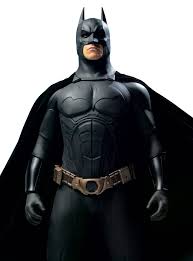 Golden Age – Batman (Earth-Two)
Golden Age – Batman (Earth-Two)
In Batman’s first appearance in Detective Comics #27, he is already operating as a crimefighter. Batman’s origin is first presented inDetective Comics #33 (November 1939), and is later fleshed out in Batman #47. As these comics state, Bruce Wayne is born to Dr. Thomas Wayne and his wife Martha, two very wealthy and charitable Gotham City socialites. Bruce is brought up in Wayne Manor, with its wealthy splendor, and leads a happy and privileged existence until the age of eight, when his parents are killed by a small-time criminal named Joe Chill while on their way home from a movie theater. Bruce Wayne swears an oath to rid the city of the evil that had taken his parents’ lives. He engages in intense intellectual and physical training; however, he realizes that these skills alone would not be enough. “Criminals are a superstitious cowardly lot,” Wayne remarks, “so my disguise must be able to strike terror into their hearts. I must be a creature of the night, black, terrible…” As if responding to his desires, a bat suddenly flies through the window, inspiring Bruce to take on the persona of Batman.
In early strips, Batman’s career as a vigilante earns him the ire of the police. During this period Wayne has a fiancée named Julie Madison. Wayne takes in an orphaned circus acrobat, Dick Grayson, who becomes his sidekick, Robin. Batman also becomes a founding member of the Justice Society of America, although he, like Superman, is an honorary member, and thus only participates occasionally. Batman’s relationship with the law thaws quickly, and he is made an honorary member of Gotham City’s police department. During this time, butler Alfred arrives at Wayne Manor, and after deducing the Dynamic Duo’s secret identities joins their service.
Silver Age
The Silver Age of Comic Books in DC Comics is sometimes held to have begun in 1956 when the publisher introduced Barry Allen as a new, updated version of The Flash. Batman is not significantly changed by the late 1950’s for the continuity which would be later referred to as Earth-One. The lighter tone Batman had taken in the period between the Golden and Silver Ages led to the stories of the late 1950’s and early 1960’s that often feature a large number of science-fiction elements, and Batman is not significantly updated in the manner of other characters until Detective Comics #327 (May 1964), in which Batman reverts to his detective roots, with most science-fiction elements jettisoned from the series.
After the introduction of DC Comics’ multiverse in the 1960s, DC established that stories from the Golden Age star the Earth-Two Batman, a character from a parallel world. This version of Batman partners with and marries the reformed Earth-Two Catwoman, Selina Kyle (as shown in Superman Family #211) and fathers Helena Wayne, who, as the Huntress, becomes (along with Dick Grayson, the Earth-Two Robin) Gotham’s protector once Wayne retires from the position to become police commissioner, a position he occupies until he is killed during one final adventure as Batman. Batman titles however often ignored that a distinction had been made between the pre-revamp and post-revamp Batmen (since unlike The Flash or Green Lantern, Batman comics had been published without interruption through the 1950’s) and would on occasionally make reference to stories from the Golden Age. Nevertheless, details of Batman’s history were altered or expanded upon through the decades. Additions include meetings with a future Superman during his youth, his upbringing by his uncle Philip Wayne (introduced in Batman #208, January/February 1969) after his parents’ death, and appearances of his father and himself as prototypical versions of Batman and Robin, respectively. In 1980 then-editor Paul Levitz commissioned the Untold Legend of the Batman limited series to thoroughly chronicle Batman’s origin and history.
Batman meets and regularly works with other heroes during the Silver Age, most notably Superman, whom he began regularly working alongside in a series of team-ups in World’s Finest Comics, starting in 1954 and continuing through the series’ cancellation in 1986. Batman and Superman are usually depicted as close friends. Batman becomes a founding member of the Justice League of America, appearing in its first story in 1960s Brave and the Bold #28. In the 1970s and 1980’s, Brave and the Bold became a Batman title, in which Batman teams up with a different DC Universe superhero each month.
In 1969, Dick Grayson attends college as part of DC Comics’ effort to revise the Batman comics. Additionally, Batman also moves from his mansion, Wayne Manor into a penthouse apartment atop the Wayne Foundation building in downtown Gotham City, in order to be closer to Gotham City’s crime. Batman spends the 1970s and early 1980s mainly working solo, with occasional team-ups with Robin and/or Batgirl. Batman’s adventures also become somewhat darker and more grim during this period, depicting increasingly violent crimes, including the first appearance (since the early Golden Age) of the Joker as a homicidal psychopath, and the arrival of Ra’s al Ghul, a centuries-old terrorist who knows Batman’s secret identity. In the 1980’s, Dick Grayson becomes Nightwing.
In the final issue of Brave and the Bold in 1983, Batman quits the Justice League and forms a new group called the Outsiders. He serves as the team’s leader until Batman and the Outsiders #32 (1986) and the comic subsequently changed its title.
Modern Batman
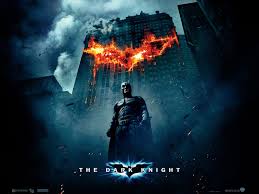 After the 12-issue limited series Crisis on Infinite Earths, DC Comics retconned the histories of some major characters in an attempt at updating them for contemporary audiences. Frank Miller retold Batman’s origin in the storyline “Year One” from Batman #404–407, which emphasizes a grittier tone in the character. Though the Earth-Two Batman is erased from history, many stories of Batman’s Silver Age/Earth-One career (along with an amount of Golden Age ones) remain canonical in the post-Crisis universe, with his origins remaining the same in essence, despite alteration. For example, Gotham’s police are mostly corrupt, setting up further need for Batman’s existence. While Dick Grayson’s past remains much the same, the history of Jason Todd, the second Robin, is altered, turning the boy into the orphan son of a petty crook, who tries to steal the tires from the Batmobile. Also removed is the guardian Phillip Wayne leaving young Bruce to be raised by Alfred Pennyworth. Additionally, Batman is no longer a founding member of the Justice League of America, although he becomes leader for a short time of a new incarnation of the team launched in 1987. To help fill in the revised backstory for Batman following Crisis, DC launched a new Batman title called Legends of the Dark Knight in 1989 and has published various miniseries and one-shot stories since then that largely take place during the “Year One” period. Various stories from Jeph Loeb and Matt Wagner also touch upon this era.
After the 12-issue limited series Crisis on Infinite Earths, DC Comics retconned the histories of some major characters in an attempt at updating them for contemporary audiences. Frank Miller retold Batman’s origin in the storyline “Year One” from Batman #404–407, which emphasizes a grittier tone in the character. Though the Earth-Two Batman is erased from history, many stories of Batman’s Silver Age/Earth-One career (along with an amount of Golden Age ones) remain canonical in the post-Crisis universe, with his origins remaining the same in essence, despite alteration. For example, Gotham’s police are mostly corrupt, setting up further need for Batman’s existence. While Dick Grayson’s past remains much the same, the history of Jason Todd, the second Robin, is altered, turning the boy into the orphan son of a petty crook, who tries to steal the tires from the Batmobile. Also removed is the guardian Phillip Wayne leaving young Bruce to be raised by Alfred Pennyworth. Additionally, Batman is no longer a founding member of the Justice League of America, although he becomes leader for a short time of a new incarnation of the team launched in 1987. To help fill in the revised backstory for Batman following Crisis, DC launched a new Batman title called Legends of the Dark Knight in 1989 and has published various miniseries and one-shot stories since then that largely take place during the “Year One” period. Various stories from Jeph Loeb and Matt Wagner also touch upon this era.
In 1988’s “Batman: A Death in the Family” storyline from Batman #426–429 Jason Todd, the second Robin, is killed by the Joker. Subsequently Batman begins exhibiting an excessive, reckless approach to his crime-fighting, a result of the pain of losing Jason Todd. Batman works solo until the decade’s close, when Tim Drake becomes the new Robin. In 2005, writers resurrected the Jason Todd character and have pitted him against his former mentor as the murderous vigilante the Red Hood.
Many of the major Batman storylines since the 1990’s have been inter-title crossovers that run for a number of issues. In 1993, DC published both “The Death of Superman” storyline and “Knightfall” . In the Knightfall storyline’s first phase, the new villain Bane paralyzes Batman, leading Wayne to ask Azrael to take on the role. After the end of “Knightfall,” the storylines split in two directions, following both the Azrael-Batman’s adventures, and Bruce Wayne’s quest to become Batman once more. The story arcs realign in “KnightsEnd,” as Azrael becomes increasingly violent and is defeated by a healed Bruce Wayne. Wayne hands the Batman mantle to Dick Grayson (then Nightwing) for an interim period, while Wayne trains to return to the role.
The 1994 company-wide crossover Zero Hour changes aspects of DC continuity again, including those of Batman. Noteworthy among these changes is that the general populace and the criminal element now considers Batman an urban legend rather than a known force. Similarly, the Waynes’ killer is never caught or identified, effectively removing Joe Chill from the new continuity, rendering stories such as “Year Two” non-canon.
Batman once again becomes a member of the Justice League during Grant Morrison’s 1996 relaunch of the series, titled JLA. While Batman contributes greatly to many of the team’s successes, the Justice League is largely uninvolved as Batman and Gotham City face catastrophe in the decade’s closing crossover arc. In 1998’s “Cataclysm” storyline, Gotham City is devastated by an earthquake and ultimately cut off from the United States Government afterwards. Deprived of many of his technological resources, Batman fights to reclaim the city from legions of gangs during 1999’s “No Man’s Land.”
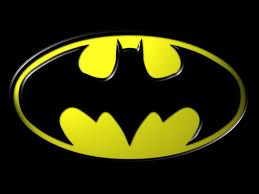 Meanwhile, Batman’s relationship with the Gotham City Police Department changed for the worse with the events of “Batman: Officer Down” and “Batman: War Games/War Crimes”; Batman’s long-time law enforcement allies Commissioner Gordon and Harvey Bullock are forced out of the police department in “Officer Down”, while “War Games” and “War Crimes” saw Batman become a wanted fugitive after a contingency plan of his to neutralize Gotham City’s criminal underworld is accidentally triggered, resulting in a massive gang war that ends with the sadistic Black Mask the undisputed ruler of the city’s criminal gangs. Other troubles come for Batman in the form of Lex Luthor (secretly behind the events of “No Man’s Land”), who seeks revenge for Bruce Wayne cancelling all of his company’s government contracts upon Luthor being elected President of the United States. Luthor arranges for the murder of Batman’s on-again, off-again love interest Vesper (introduced in the mid-1990s) during the “Bruce Wayne: Murderer?” and “Bruce Wayne: Fugitive” story arcs. Though Batman is able to clear his name, he loses another ally in the form of his new bodyguard Sasha, who is recruited into the organization known as “Checkmate” while stuck in prison due to her refusal to turn state’s evidence against her employer. While he was unable to prove that Luthor was behind the murder of Vesper, Batman does get his revenge with help from Talia al Ghul in Superman/Batman #1–6: not only does he bring down Lex Luthor’s Presidency but also engages in a hostile take-over of Luthor’s corporate holdings, bankrupting the villain in the process.
Meanwhile, Batman’s relationship with the Gotham City Police Department changed for the worse with the events of “Batman: Officer Down” and “Batman: War Games/War Crimes”; Batman’s long-time law enforcement allies Commissioner Gordon and Harvey Bullock are forced out of the police department in “Officer Down”, while “War Games” and “War Crimes” saw Batman become a wanted fugitive after a contingency plan of his to neutralize Gotham City’s criminal underworld is accidentally triggered, resulting in a massive gang war that ends with the sadistic Black Mask the undisputed ruler of the city’s criminal gangs. Other troubles come for Batman in the form of Lex Luthor (secretly behind the events of “No Man’s Land”), who seeks revenge for Bruce Wayne cancelling all of his company’s government contracts upon Luthor being elected President of the United States. Luthor arranges for the murder of Batman’s on-again, off-again love interest Vesper (introduced in the mid-1990s) during the “Bruce Wayne: Murderer?” and “Bruce Wayne: Fugitive” story arcs. Though Batman is able to clear his name, he loses another ally in the form of his new bodyguard Sasha, who is recruited into the organization known as “Checkmate” while stuck in prison due to her refusal to turn state’s evidence against her employer. While he was unable to prove that Luthor was behind the murder of Vesper, Batman does get his revenge with help from Talia al Ghul in Superman/Batman #1–6: not only does he bring down Lex Luthor’s Presidency but also engages in a hostile take-over of Luthor’s corporate holdings, bankrupting the villain in the process.
DC’s 2005 limited series Identity Crisis reveals that JLA member Zatanna had edited Batman’s memories to prevent him from stopping the League from lobotomizing Dr. Light after he raped Sue Dibny. This served as a retcon for Batman’s complete distrust for his fellow superheroes after he remembers, which, under writers such as Mark Waid in the “Tower of Babel” arc in JLA, manifested itself in the form of Batman keeping extensive files on how to kill his fellow superheroes. Batman later creates the Brother I satellite surveillance system to watch over and if necessary, kill the other heroes. It is eventually co-opted by Maxwell Lord, who then kills superhero Blue Beetle to keep him from alerting the Justice League of the existence of Batman’s murderous creation. The revelation of Batman’s creation and his tacit responsibility for Blue Beetle’s death becomes a driving force in the lead-up to the Infinite Crisis miniseries, which again restructures DC continuity. In Infinite Crisis #7, Alexander Luthor, Jr. mentions that in the newly rewritten history of the “New Earth“, created in the previous issue, the murderer of Martha and Thomas Wayne – again, Joe Chill – was captured, thus undoing the retcon created after Zero Hour. Batman and a team of superheroes destroy Brother Eye and the OMACs, though at the very end Batman reaches his apparent breaking point when Alexander Luthor Jr. seriously wounds Nightwing. Picking up a gun, Batman nearly shoots Luthor in order to avenge his former sidekick, until Wonder Woman convinces him to not pull the trigger.
 Following Infinite Crisis, Bruce Wayne, Dick Grayson (having recovered from his wounds), and Tim Drake retrace the steps Bruce had taken when he originally left Gotham City, to “rebuild Batman.” In the Face the Face storyline, Batman and Robin return to Gotham City after their year-long absence. Part of this absence is captured during Week 30 of the 52 series, which shows Batman fighting his inner demons. Later on in 52, Batman is shown undergoing an intense meditation ritual in Nanda Parbat. This becomes an important part of the regular Batman title, which reveals that Batman is reborn as a more effective crime fighter while undergoing this ritual, having “hunted down and ate” the last traces of fear in his mind. At the end of the “Face the Face” story arc, Bruce officially adopts Tim (who had lost both of his parents at various points in the character’s history) as his son. The follow-up story arc inBatman, Batman & Son, introduces Damian Wayne, who is Batman’s son with Talia al Ghul. Batman, along with Superman and Wonder Woman, reforms the Justice League in the new Justice League of America series, and is leading the newest incarnation of theOutsiders.
Following Infinite Crisis, Bruce Wayne, Dick Grayson (having recovered from his wounds), and Tim Drake retrace the steps Bruce had taken when he originally left Gotham City, to “rebuild Batman.” In the Face the Face storyline, Batman and Robin return to Gotham City after their year-long absence. Part of this absence is captured during Week 30 of the 52 series, which shows Batman fighting his inner demons. Later on in 52, Batman is shown undergoing an intense meditation ritual in Nanda Parbat. This becomes an important part of the regular Batman title, which reveals that Batman is reborn as a more effective crime fighter while undergoing this ritual, having “hunted down and ate” the last traces of fear in his mind. At the end of the “Face the Face” story arc, Bruce officially adopts Tim (who had lost both of his parents at various points in the character’s history) as his son. The follow-up story arc inBatman, Batman & Son, introduces Damian Wayne, who is Batman’s son with Talia al Ghul. Batman, along with Superman and Wonder Woman, reforms the Justice League in the new Justice League of America series, and is leading the newest incarnation of theOutsiders.
Grant Morrison‘s 2008 storyline, Batman R.I.P. featured Batman being physically and mentally broken by the enigmatic “Black Glove” and attracted news coverage in advance of its highly promoted conclusion, which would speculated to feature the death of Bruce Wayne. However, though Batman is shown to possibly perish at the end of the arc, the two-issue arc “Last Rites,” which leads into the crossover event Final Crisis, shows that Batman survives his helicopter crash into the Gotham City River and returns to the Batcave, only to be summoned to the Hall of Justice by the JLA to help investigate the New God Orion‘s death. In the story, Batman is kidnapped by the New God Granny Goodness and mentally probed by Darkseid‘s minions, as part of Darkseid’s ultimately unsuccessful attempts to create clones of Bruce Wayne. The story ends with Batman retrieving the god-killing bullet used to kill Orion, setting up its use in Final Crisis. In the pages of Final Crisis itself, the world is plunged into despair by the evil New God Darkseid. In Final Crisis#6 Batman confronts Darkseid and announces that he will make a once-in-a-lifetime exception by using a firearm when facing the villain. Batman shoots Darkseid with the god-killing bullet just as Darkseid unleashes his Omega Sanction upon Batman. Darkseid is killed and Batman is reduced to a charred skeleton. Final Crisis #7 shows, however, that the Omega Sanction in fact sends its victim’s consciousness into the distant past; Wayne is shown witnessing the passing of the first man, Anthro. Wayne’s “death” sets up the three-issue Battle for the Cowl miniseries in which Wayne’s ex-proteges compete for the “right” to assume the role of Batman, which concludes with Grayson becoming Batman, while Tim Drake takes on the identity of Red Robin. Dick and Damian continue as Batman and Robin, and in the crossover event Blackest Night, what appears to be Bruce’s corpse is reanimated as a Black Lantern zombie, but is later shown that Bruce’s corpse is one of Darkseid’s failed Batman clones. Dick and Batman’s other friends conclude that Bruce is alive. Bruce subsequently returns in Morrison’s miniseries Batman: The Return of Bruce Wayne, which depicts his travels through time from prehistory to present-day Gotham. Bruce’s return sets up Batman Incorporated, an ongoing series which focuses on Wayne franchising the Batman identity across the globe, allowing Dick and Damian to continue as Gotham’s Dynamic Duo. Bruce publicly announces that Wayne Enterprises will aid Batman on his mission, known as “Batman, Incorporated.” Due to editorial mandate coinciding with DC’s 2011 relaunch however, Grayson is restored as Nightwing with Wayne serving as the sole Batman once again. The relaunch also interrupts the publication of Batman, Incorporated, which resumes its story in 2012 with changes to suit the new status quo.
Personality
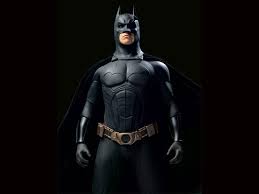 Batman’s primary character traits can be summarized as “wealth; physical prowess; deductive abilities and obsession.” The details and tone of Batman comic books have varied over the years due to different creative teams. Dennis O’Neil noted that character consistency was not a major concern during early editorial regimes: “Julie Schwartz did a Batman in Batman and Detective and Murray Boltinoff did a Batman in the Brave and the Bold and apart from the costume they bore very little resemblance to each other. Julie and Murray did not want to coordinate their efforts, nor were they asked to do so. Continuity was not important in those days.”
Batman’s primary character traits can be summarized as “wealth; physical prowess; deductive abilities and obsession.” The details and tone of Batman comic books have varied over the years due to different creative teams. Dennis O’Neil noted that character consistency was not a major concern during early editorial regimes: “Julie Schwartz did a Batman in Batman and Detective and Murray Boltinoff did a Batman in the Brave and the Bold and apart from the costume they bore very little resemblance to each other. Julie and Murray did not want to coordinate their efforts, nor were they asked to do so. Continuity was not important in those days.”
The driving force behind Batman’s character is from his childhood. Bob Kane and Bill Finger discussed Batman’s background and decided that “there’s nothing more traumatic than having your parents murdered before your eyes.” Despite his trauma, he is driven to train to become a brilliant scientist and train his body into absolute physical perfection to fight crime in Gotham City as Batman, an inspired idea from Wayne’s insight into the criminal mind.
Another of Batman’s characterizations is a vigilante; in order to stop evil that started with the death of his parents, he must sometimes break laws himself. Although manifested differently by being re-told by different artists, it is nevertheless that the details and the prime components of Batman’s origin have never varied at all in the comic books, the “reiteration of the basic origin events holds together otherwise divergent expressions.” The origin is the source of the character’s traits and attributes, which play out in many of the character’s adventures.
Batman is often treated as a vigilante by other characters in his stories. Frank Miller views the character as “a dionysian figure, a force for anarchy that imposes an individual order.” Dressed as a bat, Batman deliberately cultivates a frightening persona in order to aid him in crime-fighting, a fear that originates from the criminals’ own guilty conscience.
Bruce Wayne
The Batman is, in his everyday identity, Bruce Wayne, a wealthy business owner living in Gotham City. Wayne averts suspicion by acting the part of a superficial, dull-witted playboy idly living off his family’s fortune (amassed through investment in real estate before the city became a bustling metropolis) and the profits of Wayne Enterprises, his inherited conglomerate. Wayne supports philanthropic causes through his nonprofit Wayne Foundation but is more widely known as a celebrity socialite. In public Wayne pretends to be a heavy drinker, using ginger ale to suggest champagne and liberally serving intoxicating beverages to guests that he never actually consumes himself. In reality, he is a strict teetotaler concerned to maintain top physical fitness and mental acuity. In public Wayne appears frequently in the company of fashionable women to encourage tabloid gossip. In reality there is less than meets the eye: though he leads an active romantic life, crime-fighting activities account for most of his night hours.
Bruce Wayne’s calculated persona as a vapid, self-indulgent son of privilege finds literary precedent in Sir Percival Blakeney, hero of the The Scarlet Pimpernel stories by Baroness Emmuska Orczy (1903), and Don Diego de la Vega, hero of the Zorro tales by Johnston McCulley (1919). Like Wayne, Sir Percy and Don Diego are each members of gentry who invite contempt by publicly playing the fool. Also like Wayne, each performs heroic deeds in secret and marks his work with a signature symbol.
The name “Bruce Wayne” was chosen for certain connotations. According to co-creator Bill Finger, “Bruce Wayne’s first name came from Robert Bruce, the Scottish patriot. Wayne, being a playboy, was a man of gentry. I searched for a name that would suggest colonialism. I tried Adams, Hancock…then I thought of Mad Anthony Wayne.”
Writers of Batman and Superman stories have often compared and contrasted the two. Interpretations vary depending on the writer, the story, and the timing. Grant Morrison notes that both heroes “believe in the same kind of things” despite the day/night contrast their heroic roles display. He notes an equally stark contrast in their real identities. Bruce Wayne and Clark Kent belong to different social classes: “Bruce has a butler, Clark has a boss.” T. James Musler’s book Unleashing the Superhero in Us All explores the crucial role played by wealth in the Bruce Wayne story.
Modern stories tend to portray Bruce Wayne as the character’s facade and the Batman as the truer representation of his personality (in counterpoint to the post-Crisis Superman, whose “Clark Kent” persona is the ‘real’ personality, and “Superman” is the ‘mask’). In Batman Unmasked, a television documentary about the psychology of the character, Associate Professor of Social Psychology at the University of California, Los Angeles, and an adjunct behavioral scientist at the Rand Corporation Benjamin Karney, notes that the Batman’s personality is driven by Bruce Wayne’s inherent humanity; that “Batman, for all its benefits and for all of the time Bruce Wayne devotes to it, is ultimately a tool for Bruce Wayne’s efforts to make the world better”.
Will Brooker notes in his book Batman Unmasked that “the confirmation of the Batman’s identity lies with the young audience…he doesn’t have to be Bruce Wayne; he just needs the suit and gadgets, the abilities, and most importantly the morality, the humanity. There’s just a sense about him: ‘they trust him… and they’re never wrong.”


